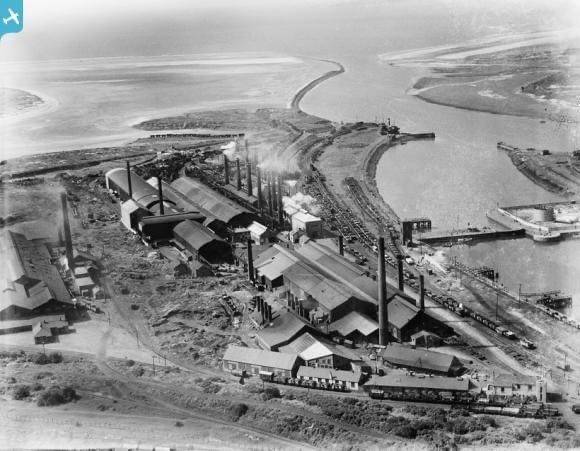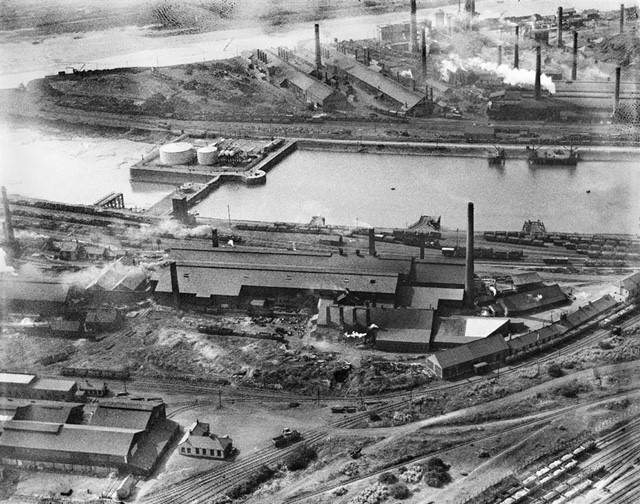Briton Ferry Dock was built by Isambard Kingdom Brunel to handle coal and goods for the Vale of Neath Railway. The dock is located on the Neath Estuary in south Wales and consists of an inner floating dock and an outer tidal basin. The dock was Brunel's first experiment with buoyant lock gates, and the only surviving example of his work in this area.
The construction of the dock was a major undertaking. The River Neath had to be dredged and a training bank built to improve the navigable channel. The dock itself was built behind a bank of slag and soil, and the hydraulic machinery was installed by William George Armstrong.
The dock was opened in 1861 and operated for over 90 years. However, trade declined after the Second World War and the dock closed in 1959. The lock gate was partially dismantled and the dock basin filled with silt. The accumulator tower fell into disrepair.
In 2003-7, the accumulator tower was refurbished and its hipped slate roof reconstructed. In 2005, the Briton Ferry Brunel Dock Trust was formed to restore the dock and Brunel's unique lock gate. Plans for restoration are underway, but funding is still needed.






